Results 9,821 to 9,830 of 12096
Thread: Anandtech News
-
08-30-19, 10:28 AM #9821
Anandtech: ASUS ZenBook Pro Duo UX58: A Dual Screen Laptop with 100% DCI-P3 OLED
Modern notebooks can offer performance and feature set comparable to those of desktop PCs. One thing that laptops cannot offer is the screen real estate: desktops can be equipped with a large 32-43-inch monitor, whereas mobile workstations come with a 15.6 – 17.3-inch LCD at best (unless, of course, they are connected to an external panel). ASUS this week launched its ZenBook Pro Duo notebook that comes with a 15.6-inch 4K primary OLED display that is accompanied by a 14-inch secondary screen.
Being in the flagship family of mobile PCs from ASUS, the ZenBook Pro notebooks incorporate all the latest and greatest technologies that the company has to offer. This includes a luxurious aluminum unibody chassis that stand out from any competition. The ZenBook Pro Duo UX58 is clearly not an exception: it comes in a celestial blue aluminum chassis with reflective edges that looks extremely stylish. Unlike most laptops in the series, the ZenBook Pro Duo UX58 is not that compact: it is 2.4 cm thick and it weighs 2.5 kilograms. But there is a reason why the notebook is not really compact: it has two displays and contains high-performance components like Intel’s eight-core CPU and NVIDIA’s GeForce RTX discrete GPU.
The primary display of the ASUS ZenBook Pro Duo UX58 is a Pantone Validated 15.6-inch OLED touchscreen with a 3840×2160 resolution that can reproduce 100% of the DCI-P3 color gamut. The secondary display of the laptop, which the company calls ScreenPad Plus and which is located above the keyboard, is a 14-inch touch-enabled display featuring a 3840×1100 resolution, a 32:9 aspect ratio, and 178? viewing angles. The ScreenPad Plus can be used like a regular secondary display under Windows to extend the desktop space. Besides, it can be used with ASUS’s ScreenXpert control software that simplifies multiscreen window and program management as well as can run specially-designed apps. Furthermore, ASUS is also working with developers of professional applications to create versions that can take advantage of the ScreenPad Plus in a way that many apps take advantage of Apple’s TouchBar.
The internals of the ASUS ZenBook Pro Duo UX58 is as premium as its externals. Depending on exact model, the notebook can be based on Intel’s six-core Core i7-9750H or unlocked eight-core Core i9-9980HK processor, though we do not know whether ASUS lets owners of the notebook overclock this CPU. The systems also feature NVIDIA’s discrete GeForce RTX 2060 graphics processor with 6 GB of GDDR6 memory; 8, 16 or 32 GB of DDR4-2666 DRAM, and an SSD with up 1 TB capacity (PCIe 2.0/3.0 x4/NVMe). Considering that we are dealing with very high-performance components, expect ASUS to use a specially designed cooling systems with multiple heat pipes and fans. To boost performance of the notebook, it has a Turbo Fan button that speeds up fans to maximize cooling performance and enable the CPU and the GPU to increase their boost clocks.
Connectivity wise, the ZenBook Pro Duo UX58 is a first-class machine as well. On the wireless side of things, the laptop is equipped with Intel’s Wi-Fi 6 solution (with Gbps+ throughput) and Bluetooth 5.0. As for physical connectors, the laptop comes with one Thunderbolt 3 port, two USB 3.1 Gen 2 Type-A connectors, an HDMI 2.0 display output, a 3.5-mm combo audio jack, and a proprietary jack for charging.
When it comes to multimedia capabilities, the mobile PC has a Windows Hello-capable webcam with IR sensors, Harman Kardon-badged stereo speakers, and a microphone array with Cortana and Alexa voice-recognition support,
At present, ASUS offers two versions of its ZenBook Pro Duo laptops: the model UX581GV-XB74T based on the six-core CPU for $2,499 as well as the model UX581GV-XB94T powered by the eight-core CPU for $2,999. Eventually, the company will offer other SKUs.
[TABLE="width: 100%"]
[TR="class: tgrey"]
[TD="colspan: 5"]The ASUS ZenBook Pro Duo Laptops[/TD]
[/TR]
[TR="class: tlblue"]
[TD="width: 150, colspan: 2"] [/TD]
[TD="width: 400"]General[/TD]
[TD="width: 400"]UX581GV-XB74T[/TD]
[TD="width: 400"]UX581GV-XB94T[/TD]
[/TR]
[TR]
[TD="class: tlgrey, colspan: 1"]Primary Display[/TD]
[TD="class: tlgrey"]General[/TD]
[TD="colspan: 3, align: center"]15.6-inch OLED with touch[/TD]
[/TR]
[TR]
[TD="class: tlgrey"]Resolution
Color Gamut[/TD]
[TD="colspan: 3, align: center"]3840×2160
100% DCI-P3
133% sRGB[/TD]
[/TR]
[TR]
[TD="class: tlgrey"]Features[/TD]
[TD="colspan: 3, align: center"]Pantone Validated
DisplayHDR True Black 500[/TD]
[/TR]
[TR]
[TD="class: tlgrey, colspan: 1"]Secondary Display[/TD]
[TD="class: tlgrey"]Diagonal[/TD]
[TD="colspan: 3, align: center"]14-inch with touch[/TD]
[/TR]
[TR]
[TD="class: tlgrey"]Resolution[/TD]
[TD="colspan: 3, align: center"]3840×1100[/TD]
[/TR]
[TR]
[TD="class: tlgrey"]Viewing Angles[/TD]
[TD="colspan: 3, align: center"]178?[/TD]
[/TR]
[TR]
[TD="class: tlgrey, colspan: 2"]CPU Options[/TD]
[TD="colspan: 1, align: center"]Intel Core i7-9750H
Intel Core i9-9980HK[/TD]
[TD="align: center"]Intel Core i7-9750H
6C/12T, 2.6 - 4.5 GHz[/TD]
[TD="align: center"]Intel Core i9-9980HK
8C/16T, 2.4 - 5 GHz[/TD]
[/TR]
[TR]
[TD="class: tlgrey, colspan: 1"]Graphics[/TD]
[TD="class: tlgrey"]Integrated[/TD]
[TD="colspan: 3, align: center"]HD Graphics 630 (24 EUs)[/TD]
[/TR]
[TR]
[TD="class: tlgrey"]Discrete[/TD]
[TD="colspan: 3, align: center"]NVIDIA GeForce RTX 2060 6 GB GDDR6[/TD]
[/TR]
[TR]
[TD="class: tlgrey, colspan: 2"]RAM[/TD]
[TD="align: center"]
-
08-30-19, 10:28 AM #9822
Anandtech: Sharp to Demonstrate 120-Inch 8K LCD TV & 8K TV with 5G Modem at IFA
Being the world’s first manufacturer to develop an Ultra-HD television featuring a 7680×4320 resolution, Sharp still has an edge over its rivals on the 8K front. At IFA next week the company plans to showcase its latest 8K devices, including the world’s largest liquid crystal display as well as an 8K TV with an integrated 5G modem.
Sharp’s next-generation 120-inch display with an 8K resolution will be the pinnacle of the company’s (and the industry’s) LCD technology as previously screens of this size used other types of panels. Sharp does not disclose refresh rate of the giant monitor or its peak brightness, but we do know that Sharp's 2nd Generation commercial 8K UHDTVs featured a 100/120 Hz refresh rate as well as 400 - 1000 nits brighness for SDR and HDR content, respectively. Whether this one will or not will depend on its manufacturing feasibility and commercial potential.
Another interesting 8K device that Sharp plans to demonstrate at IFA will be its 8K display with a built-in 5G modem designed specifically for museums and schools. The 8K Viewer with 5G enables remote viewing of art (or architecture) masterpieces or highly-detailed images/videos needed for education with a naked eye remotely (and with a certain level of interactivity, provided that there is an appropriate infrastructure).
In fact, Sharp plans to create a so-called 8K+5G ecosystem whereby ultra-high-resolution videos and images will be delivered over a 5G network to the end user or to the Internet. For example, a camcorder equipped with a 5G modem will be able to broadcast 8K video with HDR to the Internet without using a smartphone. Considering the fact that an 8K video stream with ultra-wide color gamut will require bandwidth of at least 512 Gbps (Ultra HD Blu-ray’s 128 Gbps × 4), 5G will make a lot of sense for such a broadcast, but to enjoy it one will need a fast Internet connection as well.
Related Reading:
- Sharp Announces 2nd Gen 8K UHD TVs at IFA
- Sharp Demonstrates 31.5-Inch 8K 120Hz HDR Monitor
- Sharp’s 8K UHD TV Available in Japan, Listed in Europe for €11,899
- CEATEC 2016: Sharp Showcases 27-inch 8K 120Hz IGZO Monitor with HDR, also 1000 PPI for VR
- Foxconn Takes Control of Sharp
Source: Sharp
Gallery: Sharp to Demonstrate 120-Inch 8K LCD TV & 8K TV with 5G Modem at IFA

More...
-
08-30-19, 02:47 PM #9823
Anandtech: Dressed to Impress: Team Group’s T-Force Delta Max RGB SATA SSD
RGB LEDs are used for thousands of enthusiast-class products these days, so in many cases manufacturers compete against each other in terms of style and try to make their devices look better than their rivals. Team Group this week introduced its T-Force Delta Max RGB SSD that features an addressable RGB LED module which covers its entire top surface making the device look like no other product on the market.
Team Group’s T-Force Delta Max RGB SSD comes in a 2.5-inch/9.5-mm SATA form-factor. Set to be available in 250 GB, 500 GB, 1 TB, and 2 TB versions, the SSD is based on Silicon Motions's SM2258 controller paired with Micron's 64-layer or 96-layer 3D TLC NAND memory. From performance point of view, we are dealing with fairly standard mainstream SATA drives: the SSD is rated for up to 560/510 MB/s sequential read/write speed as well as up to 90K/80K random read/write IOPS.
True to its name, the SSD features an oversized addressable RGB LED module on top that features built-in rainbow color water flowing lighting effect and can be controlled using software from leading motherboard manufacturers. The product has a 9-pin USB header for built-in lighting effect as well as a 4-pin 5V header for controls using appropriate apps.
The RGB LED module naturally takes space, which is why the T-Force Delta Max RGB is 2.5 mm thicker than most 2.5-inch SSDs available on the market today (which are 7 mm thick). Considering the fact that the drive is aimed at desktop enthusiasts, it is unlikely that it will be bought to use inside mobile PCs. Nonetheless, one should keep this peculiarity in mind.
Team’s ‘dressed to impress’ T-Force Delta Max RGB SSDs will be available shortly. The 250 GB version carries a price tag of $59.99, the 500 GB model is priced at $89.99, whereas the 1 TB SKU features an MSRP of $149.99.Team Group T-Force Delta Max RGB SSD Specifications Capacity 250 GB 500 GB 1 TB 2 TB Model Number T253TM250G3C302 T253TM500G3C302 T253TM001T3C302 ? Controller Silicon Motion SM2258 NAND Flash 3D TLC NAND Form-Factor, Interface 2.5-inch/9.5-mm, SATA 6 Gbps Sequential Read 560 MB/s Sequential Write 500 MB/s 510 MB/s Random Read IOPS 90K 90K Random Write IOPS 75K 80K Pseudo-SLC Caching Supported DRAM Buffer Yes, capacity unknown TCG Opal Encryption ? Power Management ? Warranty 3 years MTBF ? TBW ? ? ? Additional Information Link MSRP $59.99 $89.99 $149.99 ?
Related Reading:
- The Team Group Delta RGB SSD Review: Lite Performance, Light Drive
- Team Group’s T-Force Cardea Liquid: A Liquid-Cooled M.2 SSD
- CES 2019: The Quintessential ADATA HC770 External HDD, with RGB
- CES 2019: ADATA Spectrix Memory & SSDs Get More RGB
Source: Team Group
More...
-
08-30-19, 02:47 PM #9824
Anandtech: AUO’s Mini LED Monitors: 32-Inch 4Kp144, 65-Inch 4Kp144, VR, & Others
Among other leading-edge consumer displays demonstrated by AU Optronics this week at Touch Taiwan 2019 trade show are the company’s monitors with Mini LED backlighting. The displays are intended for a variety of applications that benefit from high brightness and contrast ratios, including Ultra-HD televisions, computer displays, VR headsets, and in-car infotainment systems.
The largest Mini LED-enabled screen from AUO is a 65-Inch display featuring a 3840×2160 resolution, 2,500 nits peak brightness, a 144 Hz refresh rate, and over 1,000 local dimming zones. Officially, this one is called a ‘large size gaming display’ and could easily compete against NVIDIA’s BFGDs sold by ASUS and HP when it is available. Meanwhile, being a maker of panels, AUO cannot pre-announce actual retail products by its partners.
The somewhat smaller Mini LED offering from AUO is its 32-inch prototype featuring a 4K resolution, 1,500 nits peak brightness, a 144 Hz refresh rate, as well as over 1,000 local dimming zones. The LCD resembles ASUS’ 32-inch ProArt PA32UCX professional display introduced at CES, but has a considerably higher refresh rate and is positioned for gaming applications.
One more gaming screen from AUO featuring a Mini LED backlighting is a 17.3-inch LTPS 4K gaming display that meets VESA’s DisplayHDR 1000 (which means at least 1000 nits brightness) requirements and is designed for high-end notebooks.
Another interesting prototype with a Mini LED backlight module is AUO’s 2.9-inch LTPS display with 2,304 dimming zones as well as a whopping pixel density of 1,688 PPI. The screen promises ultimate fidelity and ultra-realistic VR experience, though it is unclear when AU Optronics will be able to ship the device commercially to interested parties.
Extending its Mini LED technology to non-gaming applications, AU Optronics has also developed a 12.3-inch LTPS curved cluster panel featuring a 750R curvature, a high resolution, 1000 nits brightness, and high contrasts. The screen is intended for vehicles, but considering how long it takes for auto industry to validate new technologies, AUO expects it to adopt this or similar displays within five years.
Based on the fact that AUO, which is one of the leading producers of LCDs on the planet, makes rather high bets on Mini LED-based backlighting, it looks like the technology certainly has a big future at least in high-end applications. What remains to be seen is when and whether this technology will get cheaper and will be used for mainstream displays.
Related Reading:
- AU Optronics's New 85-Inch 8K LCD TV with 1,024-Zone Backlighting
- ASUS Mini LED Professional Monitors Update: Available This Year
- Acer Joins Mini LED Monitor Club with Professional-Focused ConceptD CM7321K
- ASUS at CES 2019: ProArt PA32UCX 4K Monitor with 1000-Zone FALD Unveiled
Source: AUO
More...
-
08-30-19, 05:36 PM #9825
Anandtech: Toshiba's Timeline for PCIe 4.0 SSDs
Following up on several announcements from Flash Memory Summit earlier this month, Toshiba has shared more information about their plans for transitioning their NVMe SSDs to PCI Express 4.0. None of their PCIe Gen4 SSDs are particularly close to volume production, so rather than share preliminary performance numbers Toshiba is talking more about which product segments will be migrating first and what other design changes are coming at the same time as the interface speed boost. Toshiba's perspective on final products and market readiness stands in contrast to the roadmaps from the SSD controller vendors that are racing to be the first ready with a full lineup of PCIe 4.0-capable controllers.
Toshiba expects the server market to be the first segment to embrace PCIe 4.0. AMD has just launched their second-generation EPYC platform with a comparative wealth of PCIe 4.0 lanes, and companies like Broadcom and Microsemi are offering PCIe 4.0 switches and HBAs. The ecosystem is just about ready to support a large-scale transition from PCIe Gen3 to Gen4, and Toshiba is expecting mainstream adoption to begin next year. They are timing their first two Gen4 SSDs for 2020. The Toshiba CM6 enterprise NVMe SSD and the CD6 datacenter NVMe SSD are successors to the existing CM5 and CD5 respectively, with the CM6 offering some more advanced enterprise features like PCIe dual-port support. Both drives will be using Toshiba's BiCS4 96-layer 3D TLC NAND flash memory, and they're currently expecting peak speeds of 6.7GB/s.
Toshiba is fully on board with the new EDSFF family of form factors, but they aren't expecting them to be going mainstream in time for the first wave of PCIe Gen4 datacenter SSDs. Instead, Toshiba is choosing the U.3 standard for the near term. This is mechanically identical to the familiar 2.5" U.2 form factor, but U.3 changes up the pin assignments. U.2 and U.3 SSDs both use the same mechanical connector as SAS drives, but where U.2 puts PCIe pins in positions not used by SAS drives, U.3 drives are capable of operating with a PCIe link on the same pins that SAS drives use for their data link. The motivation behind this change is to simplify cabling and backplanes for tri-mode ports that can accept SATA, SAS or NVMe SSDs. Broadcom in particular has been selling tri-mode HBAs and RAID cards that support all three protocols, and the use of U.3 instead of U.2 makes it much easier to make full use of the flexibility of those host interfaces. U.2 drives won't work in U.3 drive bays, but U.3 drives are required to work with U.2 ports. Toshiba has enabled this by adding an extra set of PCIe PHYs to their SSD controllers rather than put switches on the SSD between the controller and connector. This avoids any potential damage to signal integrity that such switches might impose.
The Toshiba CM5 is available in both 2.5" U.2 and PCIe add-in card form factors, but the latter is being dropped by the CM6 due to a perceived lack of demand or compelling use cases. The add-in card form factor was already a very small slice of the SSD market, and PCIe 4.0 allows products that were using a PCIe 3.0 x8 interface to drop back down the a four-lane connection as provided by U.2/U.3 ports. For products that were using the AIC form factor more for the sake of enabling higher SSD capacity than for the sake of a wider PCIe link, the EDSFF 1U Long "Ruler" form factor will be taking over eventually, but that may not happen for another product generation or two.
Toshiba is currently working with their partners for testing and validation of the CM6 and CD6, with volume availability planned for 2020. Further down the road, Toshiba is also working on an XD6 replacement for their XD5. These are their more hyperscaler-oriented datacenter drives, with more of a focus on low power and latency compared to the CD and CM series focus on higher performance and more advanced features. The XD5 uses the M.2 22110 form factor. The XD6 will retain that option and may also be Toshiba's first SSD to use the EDSFF E1.S (1U Short) form factor. Datacenter M.2 drives need the advantages of EDSFF form factors a lot more than other existing form factors do, and across the industry as a whole it looks like the E1.S form factor will be the first EDSFF variant to go mainstream. Officially, the XD6 is being targeted for shipment "after 2020".
Even though there are a few PCIe Gen4 SSDs already available in the consumer segment, Toshiba is predicting that PCIe Gen4 will remain a niche enthusiast feature for a while longer. Since Toshiba's client SSD sales are almost exclusively to OEMs rather than direct to consumers in the form of retail products, they aren't under much pressure yet to switch these products over to PCIe Gen4 and haven't made any official statements about upcoming products for this segment. We probably won't see a successor to the XG6 and XG6-P until Toshiba's 1xx-layer 3D NAND is ready. If Toshiba decides to continue their pattern of using that product line as the first shipping SSDs with a new generation of NAND, then the hypothetical XG7 might show up before they're ready to move their client SSDs to PCIe Gen4. M.2 will continue to be the mainstream form factor for client NVMe SSDs, but Toshiba is already planning for smaller form factors to become more commonplace. They've announced the new XFMEXPRESS card for small portable and embedded systems, and they are expecting the M.2 2230 card size to gain popularity as M.2 2280 transitions to more of a niche role for enthusiast drives and multi-TB capacities.
Storage array appliances tend to have long product cycles, and this is one of the areas where even SAS SSDs are still relevant. Toshiba is expecting this market segment to be one of the last to migrate to PCIe Gen4 and new form factors, probably reaching a tipping point around 2023. Ultimately, these systems will probably be moving to the EDSFF E1.L or E3 form factors.
Toshiba's strategy is similar to the partial roadmap that Samsung shared last fall. They are also starting with their high-performance enterprise/datacenter drives. Samsung's client NVMe drives and their entry-level datacenter drives typically use the same controllers, and while no PCIe 4.0 update to these product lines has been announced, we can expect to see something in 2020 or possibly at the very end of this year.
More...
-
08-31-19, 10:17 AM #9826
Anandtech: LG's New 55+ inch OLED Plant in China Opens: Over 1m+ per Year
LG Display this month started production at its 8.5th Generation OLED manufacturing facility in Guangzhou, China. When fully ramped, total capacity of the factory will be 90,000 substrates per month. The plant will produce 55, 65, and 77-inch high-resolution panels for televisions. In fact, LG’s goal is to make 10 million large size OLED panels per year by 2022, which means to more than double its current output.
The new 8.5G OLED panel plant is a nine-level building above the ground that occupies a 74,000 m² piece of land and provides 427,000 m² of floor space. Initial capacity of the manufacturing facility will be 60,000 2200×2500 mm substrates per month, which will be expanded to 90,000 sheets per month by 2021. The factory will be operated by LG Display High-Tech China, a joint venture between LG Display and Guangzhou Development District, in which the former holds a 70% stake (with ~$2,150 billion in capital).
Facing cut-throat competition from various makers of liquid crystal displays, LG Display recently set a strategic goal to significantly expand production of large OLED panels in a bid to serve more lucrative and growing market segments. LGD says that it sold 2.9 million huge OLED panels in 2018 and expects to sell 3.8 million large panels this year, which will turn this business to profitability. Citing market researchers, the manufacturer says that demand for OLED TVs and panels is growing and to that end, it makes a great sense to invest in OLED plants.
Right now, LG makes 70,000 8.5G OLED substrates at its plant near Paju, South Korea. The company is building a 10.5th Generation OLED plant near Paju that will produce 45,000 of 2940×3370 mm substrates per month when it is ready in 2022. Combined, LGD will manufacture 160,000 8.5G OLED substrates and 45,000 10.5G OLED sheets a month in 2022. The company hopes that its expanded manufacturing capacity will enable it to make 10 million of large OLED panels per year by 2022.
Related Reading:
- LG to Start Production of OLEDs in China Next Month, Set to Double OLED Output
- AU Optronics OLED Displays: A New Foldable + A New 17.3-Inch 4K120
- Japan’s Ministry Approves Shipments of Industrial Chemicals to South Korea
- Samsung Mulls Suspending South Korea LCD Plant Due to Oversupply
Source: LG Display
More...
-
08-31-19, 10:17 AM #9827
Anandtech: World’s First Smartphone with a 64 MP Camera: Xiaomi’s Redmi Note 8 Pro
Xiaomi has unveiled its new breed of Redmi Note smartphones boasting with high-performance SoCs as well as premium cameras. The new flagship Redmi Note 8 Pro is the industry’s first handset to feature Samsung GW1 64MP camera module, whereas the Redmi Note 8 offers a 48 MP camera at an entry-level price point.
The Redmi Note 8 Pro
The Xiaomi Redmi Note 8 Pro comes in a rather standard chassis comprised of an aluminum frame encompassed with Gorilla Glass 5 and features a 6.53-inch IPS LCD display with a 2340×1080 resolution as well as a 19.5:9 ratio. With a screen to body ratio of 91.4% (according to Xiaomi) and a rain drop selfie camera module, the device will be available in three colors: Mineral Grey, Pearl White and Forest Green.
Being a range-topping ‘Pro-level’ device, the Redmi Note 8 Pro is based on MediaTek’s flagship G90T SoC (two Cortex-A76, six Cortex-A55, quad-cluster Mali G76 at 800 MHz, AI-specific accelerators, dual-channel LPDDR4X controller, 12FFC) accompanied by 6 or 8 GB of LPDDR4X memory as well as 64 or 128 GB of NAND flash storage (expandable using a microSD card). The SoC is cooled down using Xiaomi’s LiquidCool cooling system (featuring a large piece of aluminum and a heat pipe) in a bid to sustain peak performance for prolonged periods. Performance wise, the new smartphone promises to be rather powerful, yet one of the main reasons to use the MediaTek G90T is because it supports a 64 MP camera module.
In fact, imaging capabilities are the key selling point of the Redmi Note 8 Pro. The main camera is comprised of the Samsung GW1 64 MP RGB module, an 8 MP ultrawide sensor with a 120° field of view, a 2 MP dedicated macro lens, a 2 MP depth sensor, and a dual-LED flash. Meanwhile, the phone also has a 20 MP camera for selfies.
Of course, the Redmi Note 8 Pro supports 4G/LTE: up to 600 Mbps downloads and up to 150 Mbps downloads. Other notable features of the Redmi Note 8 Pro include a 4,500 mAh battery, 802.11ac Wi-Fi, Bluetooth 5.0, NFC, IP52 splash-proof protection, a USB 2.0 Type-C port for data and charging, a 3.5-mm audio jack, an IR blaster, and stereo speakers.
The Redmi Note 8
The 'younger' brother of the family — the Redmi Note 8 — is naturally a more cost effective option. Coming in an aluminum with glass on the front and plastic on the back chassis, this smartphone has a 6.3-inch IPS LCD display with 2340×1080 resolution. It is based on Qualcomm’s Snapdragon 665 SoC (four Cortex-A73-like cores, four Cortex-A53-like cores, an Adreno 610 GPU, X12 LTE modem) that is paired with 4 or 6 GB of RAM as well as 64 GB or 128 GB of storage.
Even though it is positioned as a mainstream smartphone, the Redmi Note 8 also has a premium quad-module main camera comprising of a 48 MP RGB sensor, an 8 MP ultrawide sensor with a 120° field of view, a 2 MP dedicated macro lens, a 2 MP depth sensor, and a LED flash. It also has a 13 MP camera for selfies. Inherited from the 'older' brother are a USB Type-C connector, an IR blaster, and a 3.5-mm headset jack.
Spec ComparisonPrice and AvailabilityThe Xiaomi Redmi Note 8 Family Redmi Note 8 Pro Redmi Note 8 Display IPS LCD
6.53"
2340x1080
Corning Gorilla Glass 5IPS LCD
6.3"
2340x1080SoC MediaTek G90T
2x Cortex-A76 at 2 GHz
6x Cortex-A55 at 2.05 GHz
quad-cluster Mali G76 at 800 MHz AI-specific accelerators
dual-channel LPDDR4X controller 12FFCQualcomm Snapdragon 665
4x Cortex-A73-like cores
4x Cortex-A53-like cores
Adreno 610 GPU
X12 LTE modemRAM 6 or 8 GB LPDDR4X 4 or 6 GB DRAM Storage 64 GB or 128 GB of NAND flash
microSD card slotLocal Connectivity Wi-Fi 802.11ac Wi-Fi Bluetooth Bluetooth 5.0 Data/Charging USB 2.0 Type-C Audio 3.5-mm jack
stereo speakers
active noice cancellation3.5-mm jack
stereo speakersNFC Yes - LTE 4G/LTE
CAT 12 UL 600 Mbps
CAT 13 UL 150 MbpsX12 LTE Navigation A-GPS, GLONASS, BDS A-GPS, GLONASS, BDS, GALILEO Rear Camera Main 64 MP, f/1.8,
1/1.7-inch
0.8µm pixels
PDAF48 MP, f/1.8,
1/2-inch
0.8µm pixels,
PDAFUltrawide 8 MP, f/2.2
13mm (ultrawide)
1/4-inch
1.12 µm pixelsMacro 2 MP, f/2.4
1/5-inch
1.075 µm pixelsDepth 2 MP, f/2.4
1/5-inch
1.075 µm pixelsFront Camera 20 MP, f/2.0 13 MP, f/2.0 Battery Capacity 4500 mAh 4000 mAh Expected Life ? ? SIM Size Nano SIM + Nano Sim Sensors accelerometer, gyro, proximity, compass Biometric Security Fingerprint Yes (?) Yes Facial Recognition - - Dimensions Height 161.3 mm | 6.35 inches 158.3 mm | 6.23 inches Width 76.4 mm | 3.01 inches 75.3 mm | 2.96 inches Thickness 8.8 mm | 0.35 inches 8.4 mm | 0.33 inches Weight 199 grams | 7.02 ounces 190 grams | 6.7 ounces Colors Mineral Grey
Pearl White
Forest GreenBlue
White/Grey
BlackProtection Drop ? - Splashes IP52 - OS Google Android 9.0 with MIUI 10 Launch Countries China initially, NA/EU launch later Price 6 GB + 64 GB — RMB 1,399
6 GB + 128 GB — RMB 1,599
8 GB + 128 GB — RMB 1,799
starts at $1724 GB + 64 GB — RMB 999
6 GB + 64 GB — RMB 1,199
6 GB + 128 GB — RMB 1,399
starts at $124
So far, Xiami has introduced its Redmi Note 8 series only for China, where they will ship in September, but expect the smartphones to hit other markets in the future. The Redmi Note 8 Pro starts at RMB 1,399 for a 6 GB + 64 GB version and goes all the way to RMB 1,799 for an 8 GB + 128 GB model. The Redmi Note 8 is naturally cheaper: it costs RMB 999 – RMB 1,399 depending on configuration.
Related Reading:
- Xiaomi Unveils Black Shark 2 Pro: Snapdragon 855+, UFS 3.0 Storage
- Xiaomi Mi 9 Lauched in China: 6.39-inch Snapdragon 855 with Game Turbo
- Xiaomi Announces Mi MIX 2S: Snapdragon 845 and Dual Camera for Mi MIX
- Xiaomi Launches Redmi Note 5 & Redmi Note 5 Pro with 18:9 5.99-Inch LCDs
- Xiaomi Announces the Redmi Note 4 in India
Sources: Xiaomi/Redmi, GSMArena
More...
-
09-02-19, 10:59 AM #9828
Anandtech: Intel’s LGA4189-4 and LGA4189-5 for Cooper Lake & Ice Lake CPUs Now Availa
TE Connectivity, a maker of various connectivity solutions, has introduced its newly-developed LGA4189 sockets for Intel’s next-generation Xeon Scalable processors supporting PCIe Gen 4. The products have been validated by Intel and are therefore ready for production of motherboards aimed at next-gen servers. It is worth noting that we already know some Cooper Lake systems are already deployed at large companies, suggesting that some LGA4189 sockets have been validated already.
TE offers LGA4189-4 and LGA3189-5 sockets (which are called Socket P4 and Socket P5), appropriate backplates, compatible bolster plates, mounting mechanisms, and dust covers. As discovered previously, Intel’s next-generation Xeon Scalable processors in LGA4189 packaging will feature a native eight-channel memory controller and PCIe 4.0, with at least eight channel memory on standard configurations.
One interesting thing to note is that TE Connectivity will offer Intel’s LGA 4189 socket in two versions: the LGA4189-4 (branded as Socket P4) and the LGA4189-5 (branded as Socket P5). Being a socket maker, TE indicates that key features of Socket P4 and Socket P5 are the same: they have the same pin count, the same 0.9906 mm hex pitch, the same SP height of 2.7 mm, and the same mounting mechanisms. Meanwhile, the company does not disclose why Intel needed two separate 4189-pin sockets. Keeping in mind that Intel will have two next-generation Xeon Scalable processors — codenamed Cooper Lake and Ice Lake — it looks like that the the single-die CPUs and multi-die CPUs will use different sockets and will not be pin-to-pin compatible despite the fact that they are going to use the same platform.
A 4189-pin socket that has to provide sufficient 56-core power and support ultra-fast interconnections is extremely complex to build. TE is currently “one of the few manufacturers that can provide sockets and hardware” for Intel’s next-gen server CPUs, the company said. Meanwhile, TE says that its LGA4189 hardware is now available to interested parties, such as server makers.
Related Reading- Power Stamp Alliance Exposes Ice Lake Xeon Details: LGA4189 and 8-Channel Memory
- Intel Xeon Update: Ice Lake and Cooper Lake Sampling, Faster Future Updates
- Intel to Offer Socketed 56-core Cooper Lake Xeon Scalable in new Socket Compatible with Ice Lake
- Intel Architecture Manual Updates: bfloat16 for Cooper Lake Xeon Scalable Only?
- Cisco Documents Shed Light on Cascade Lake, Cooper Lake, and Ice Lake for Servers
Source: TE Connectivity
More...
-
09-03-19, 07:14 AM #9829
Anandtech: Toshiba Memory to Acquire Lite-On’s SSD Business: Gains IP, R&D, Manufactu
Toshiba Memory, which is set to rebrand as Kioxia Holdings this October, has signed a definitive agreement to acquire SSD business of Lite-On Technology Corp. The decision will enable Toshiba to produce its own SSDs using proven IP, technologies, and product lines.
Under the terms of the agreement, Toshiba Memory will pay Lite-On $165 million dollars for its SSD business, which includes IP, R&D operations, manufacturing lines (i.e., equipment, buildings, etc.), sales channels, and other assets. The transaction is expected to close sometimes in the first half of 2020.
While Lite-On is primarily known for its SSDs as well as optical disc drives, the company produces a wide range of products for major PC makers, including Dell and Lenovo. Despite the fact that Lite-On is the world’s No. 3 supplier of enterprise and datacenter NVMe drives with a 7% market share (according to Forward Insight), SSD business is not the main source of revenue that Lite-On has.
At present, Lite-On has two SSD manufacturing facilities in Taiwan that can produce 12 million of client drives as well as 6 million of datacenter drives per year. In addition, the company owns a $45 million stake in its joint venture with Tsinghua Unigroup (it invested $45 million in early 2018) that develops and produces SSDs in Suzhou, China. This JV can produce up to 45 million drives a year. It is likely that Toshiba Memory will obtain Lite-On’s 45% stake in the JV as a part of its acquisition deal, but this was not explicitly confirmed in the press release.
As a result of the acquisition, Toshiba Memory will expand its SSD market share and will therefore improve its profit margins as it is more lucrative to sell drives rather than 3D NAND memory. Meanwhile, it should be noted that Tsinghua Unigroup formed the JV with Lite-On to produce SSDs based on 3D NAND made in China by one of the producers the Chinese government controls or supports directly or via ivarious companies. That said, it remains to be seen how Kioxia will deal with Tsinghua Unigroup once the acquisition with Lite-On is closed.
Nobuo Hayasaka, acting President and CEO of Toshiba Memory had the following to say:
“Lite-On’s solid state drive business is a natural and strategic fit with Toshiba Memory and expands our focus in the SSD industry. This is an exciting acquisition for us, as it positions us to meet the projected growth in demand for SSDs in PCs and data centers being driven by the increased use of cloud services.”Related Reading- Toshiba Memory To Rebrand As Kioxia
- Lite-On and Tsinghua Unigroup Create $100 Million Joint Venture for SSD Operations in China
- Toshiba's Timeline for PCIe 4.0 SSDs
- Toshiba Introduces New Tiny NVMe SSD Form Factor
- Lite-On Demos Its First ‘Ruler’ EDSFF SSDs: CNEX Labs Controller, Up to 80 TB Capacity
- Western Digital: Nearly All NAND Capacities Resumed Normal Operations
Source: Toshiba Memory
More...
-
09-03-19, 11:13 AM #9830
Anandtech: AOC Launches CQ27G1 Curved Monitor: 27 Inch, 144 Hz, FreeSync, Sub-$300
AOC has expanded its lineup of inexpensive G1-series curved displays with a new model. The new 27-inch CQ27G1 features a QHD resolution as well as G1’s traditional set of features, including a 144 Hz maximum refresh rate, AMD’s FreeSync technology, and a 1800R curvature.
The AOC CQ27G1 is based on a 27-inch curved VA panel featuring a 2560×1440 resolution, 250-nits peak brightness, a 3000:1 contrast ratio, 178/178º viewing angles, 1 ms MPRT response times, and a 144 Hz refresh rate. In line with other inexpensive VA panels on the market, this one can display 16.7 million colors.
AOC’s CQ27G1 monitor will sit between the Full-HD C27G1 of the same size and the larger QHD C32G1. Just like other members of the family, this one features three key technologies important for gamers, including AMD’s FreeSync dynamic refresh rate technology, a 144 Hz maximum refresh rate, and 1 ms ultra-low motion picture response time. AOC has not revealed the FreeSync ranges of the display and whether they are wide enough to support AMD’s Low Frame Rate (LFC) features. Typically, entry-level 144 Hz monitors offer rather decent FreeSync ranges from 30 to 144 Hz, yet LFC capability is not guaranteed.
When it comes to connectivity, the CQ27G1 keeps the number of ports to a minimum, it only features a DisplayPort 1.2, two HDMI 2.0 inputs, as well as a 3.5-mm headphone jack. To keep BOM costs in check, neither of AOC’s G1 monitors are equipped with speakers, or a USB hub. Meanwhile, the CQ27G1 features a decent stand that can adjust height (±130 mm), tilt (-4° ~ +21.5°), and swivel (±34°). Furthermore, the display has 100x100 VESA mounting holes.
AOC’s CQ27G1 curved display is now available from Amazon and other leading retailers for $279.99.AOC's 27-Inch G1 QHD Monitor CQ27G1 Panel 27" IPS Native Resolution 2560 × 1440 Maximum Refresh Rate 144 Hz Response Time 1 ms MPRT Brightness 250 cd/m² Contrast 3000:1 Viewing Angles 178°/178° horizontal/vertical Curvature 1800R Pixel Pitch 0.2335 mm² Pixel Density 109 ppi Anti-Glare Coating ? Color Gamut sRGB Dynamic Refresh Rate AMD FreeSync (30 - 144 Hz?) Inputs 1 × DP 1.2
2 × HDMI 2.0USB Hub none Audio audio out port Power Consumption Idle: 0.5 W
Typical: 29 WStand Tilt: -4° ~ +21.5°
Swivel: ±34°
Height: ±130 mmLaunch Price $279.99
Related Reading- AOC Unveils Cheap G1-Series Curved Displays with 144 Hz & FreeSync: Starting at $28
- AOC’s CQ32G1 Curved Monitor: 31.5 Inch, 144 Hz, FreeSync, Sub $400
- AOC’s Agon Monitors with 0.5ms Response Time & 240 Hz Refresh Now Available
- AOC Introduces Its G2868PQU Monitor: An Inexpensive 4K Gaming Display with FreeSync
Source: AOC
Gallery: AOC Launches CQ27G1 Curved Monitor: 27 Inch, 144 Hz, FreeSync, Sub-$300

More...
Thread Information
Users Browsing this Thread
There are currently 12 users browsing this thread. (0 members and 12 guests)




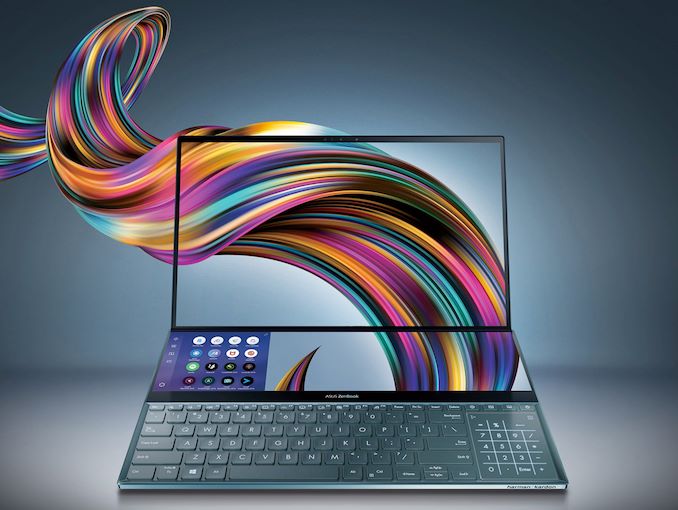
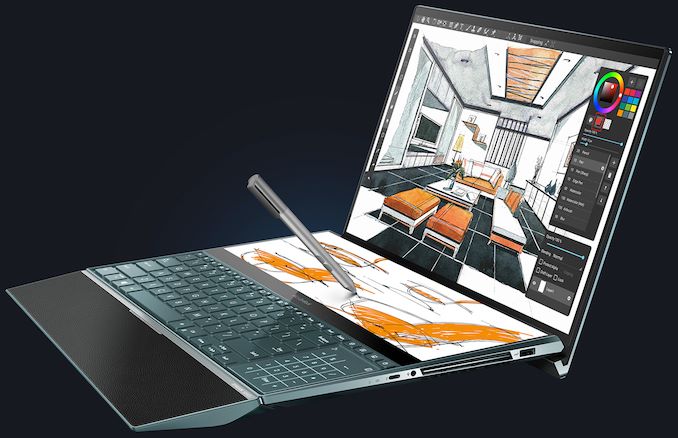
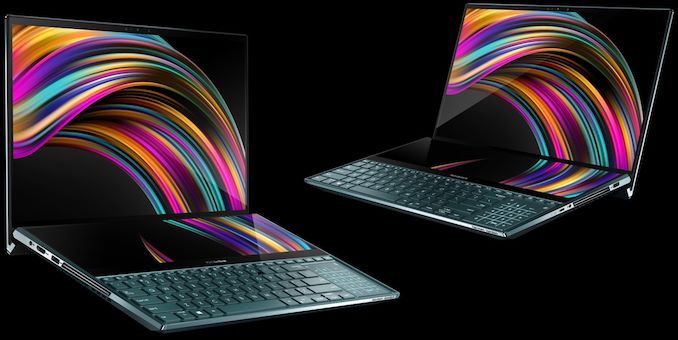
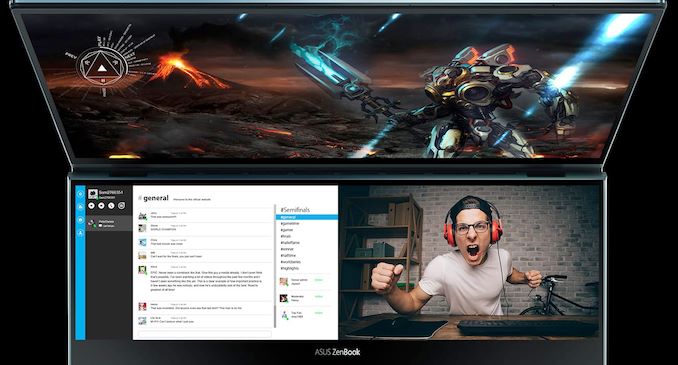
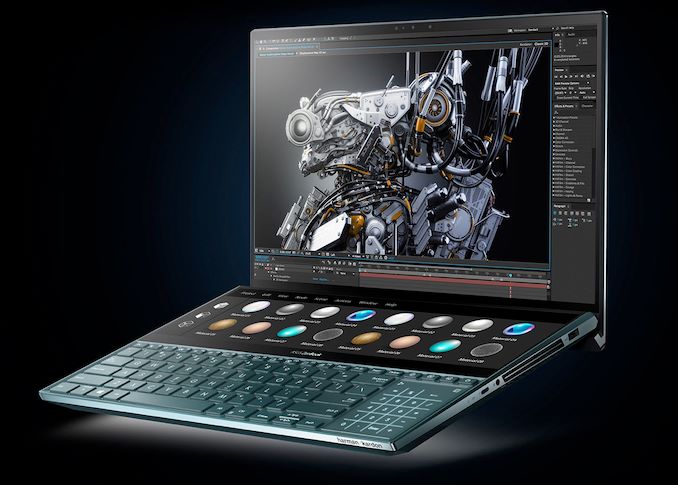
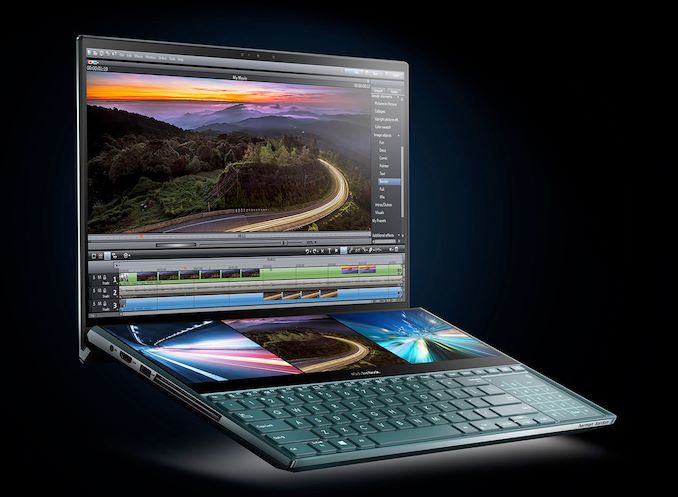
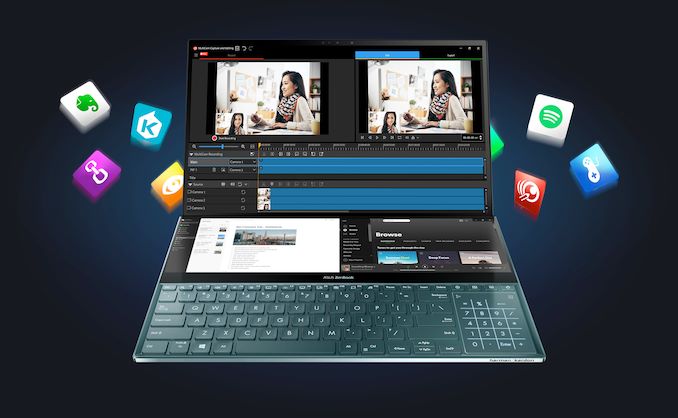

 Quote
Quote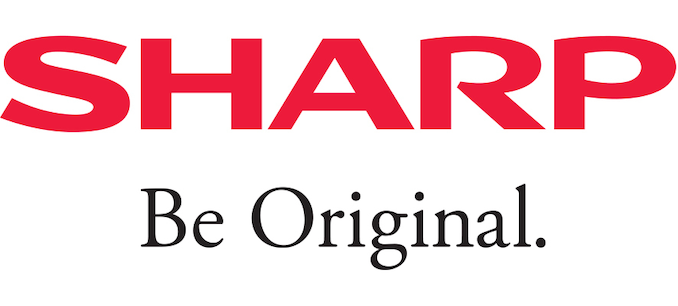

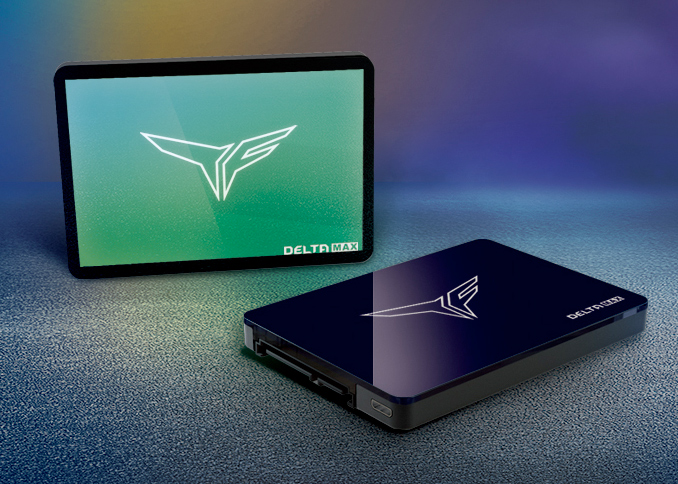
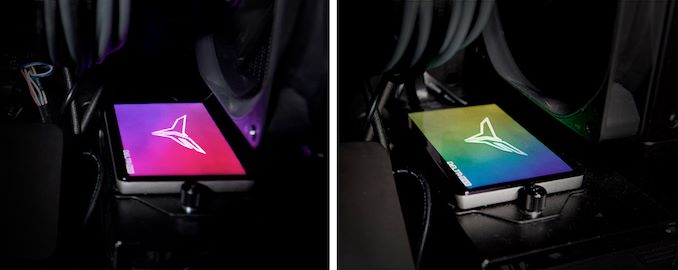

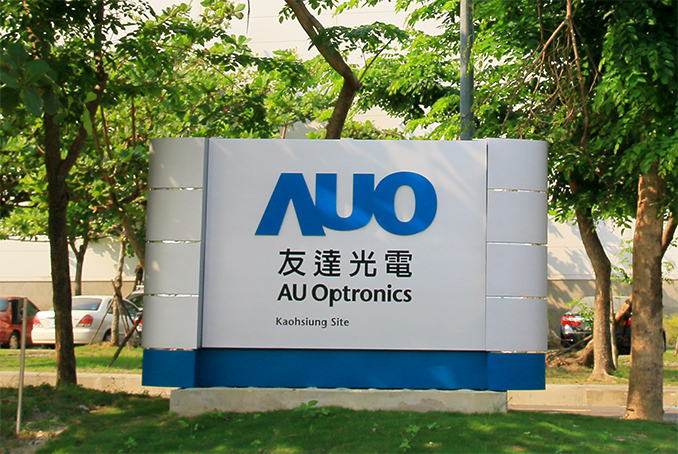
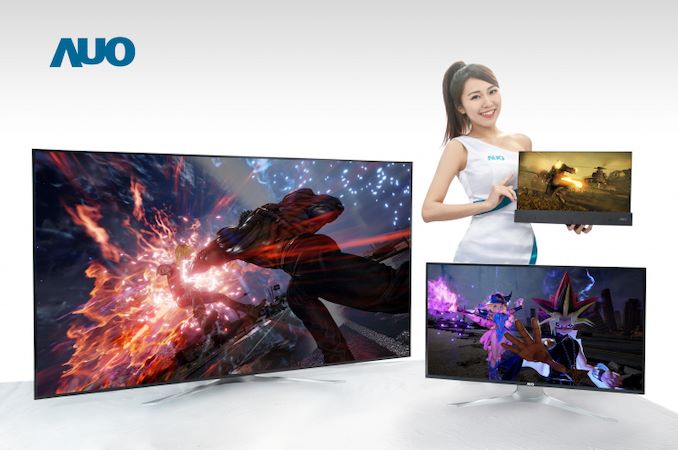
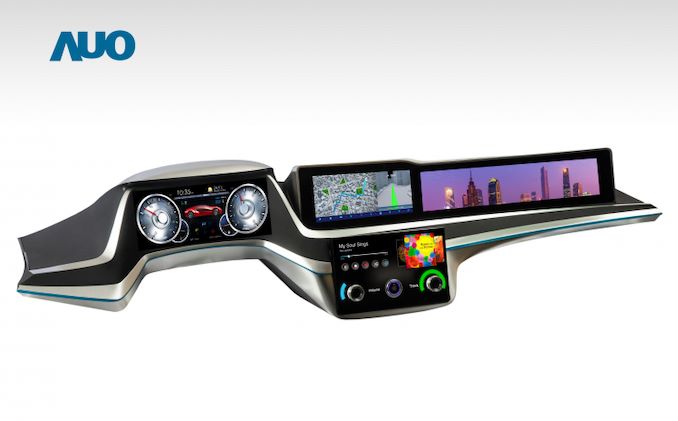
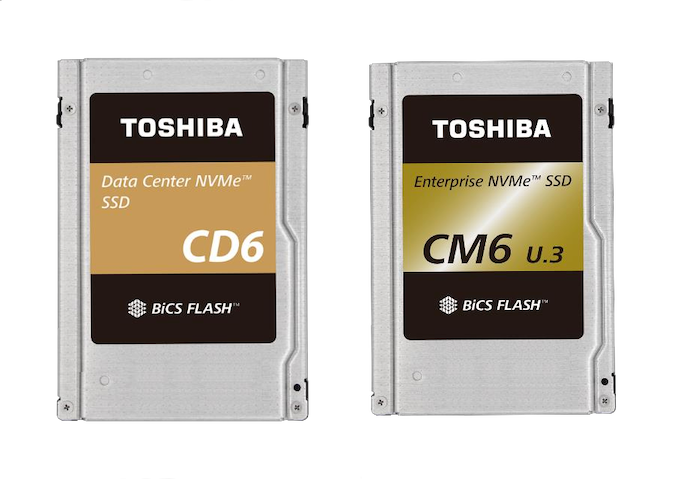

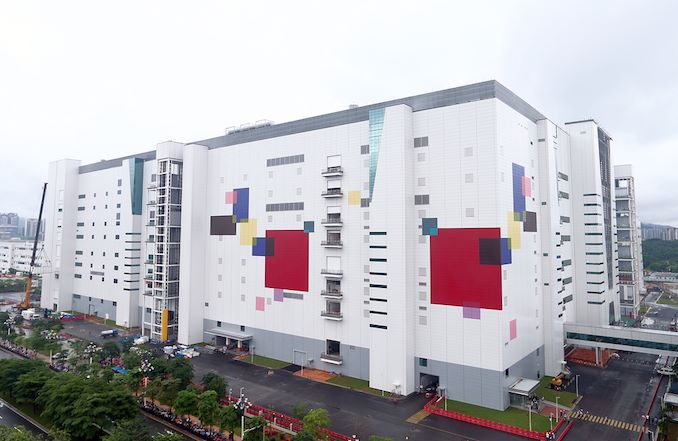
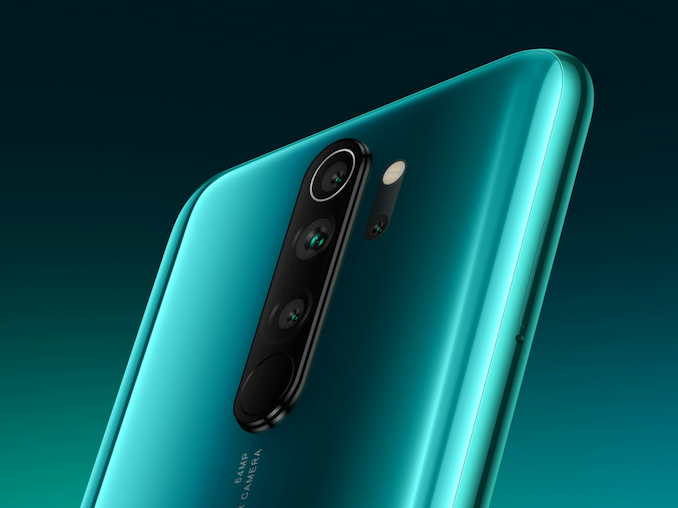

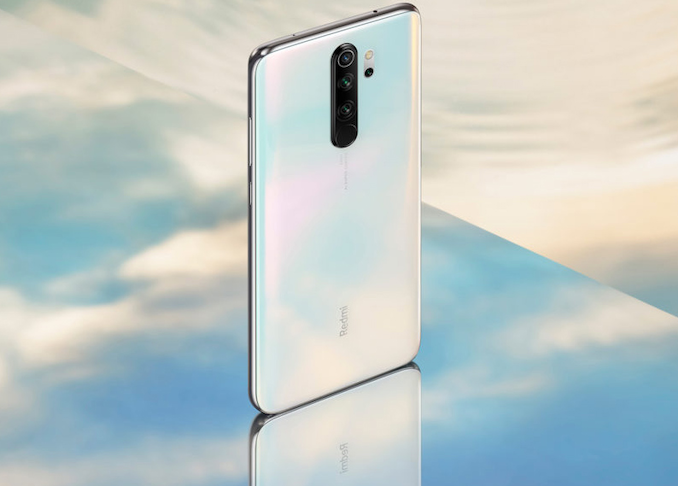
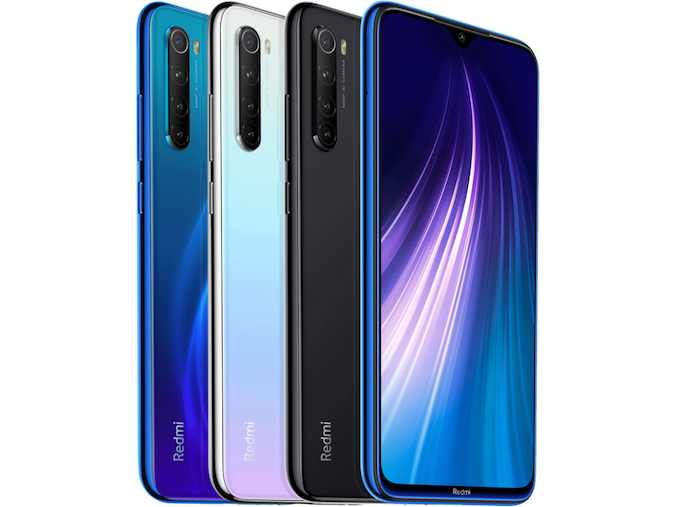
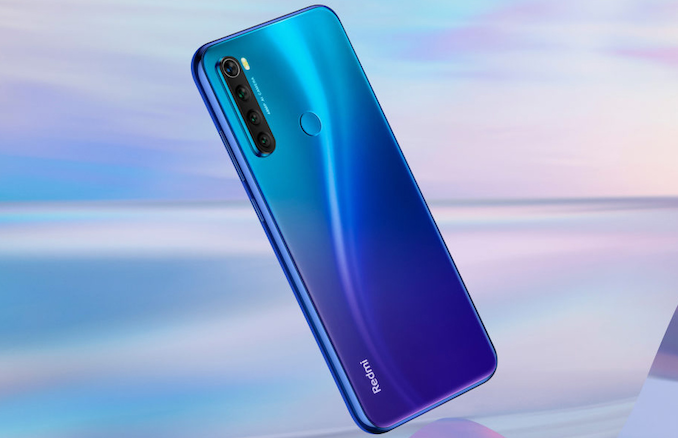
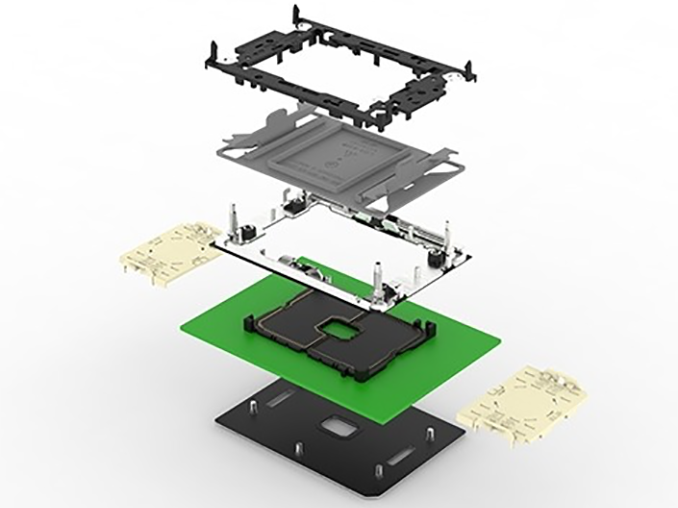
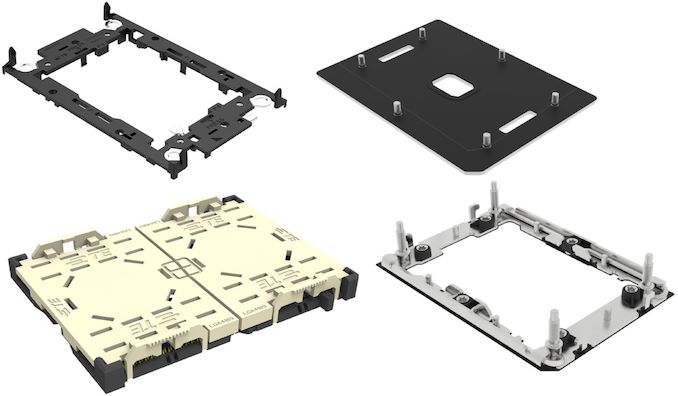
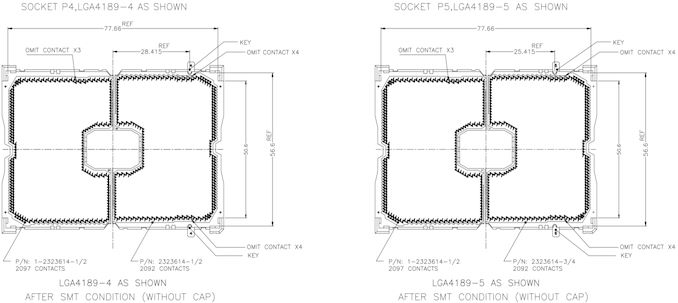

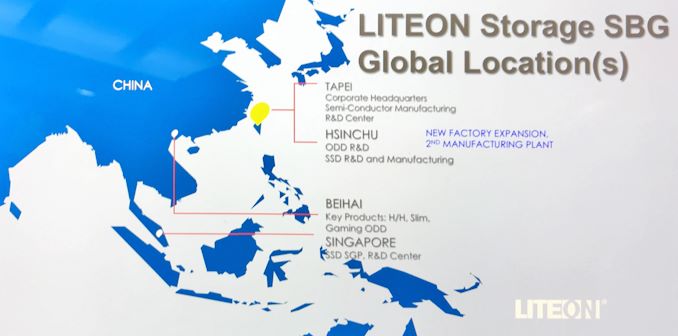
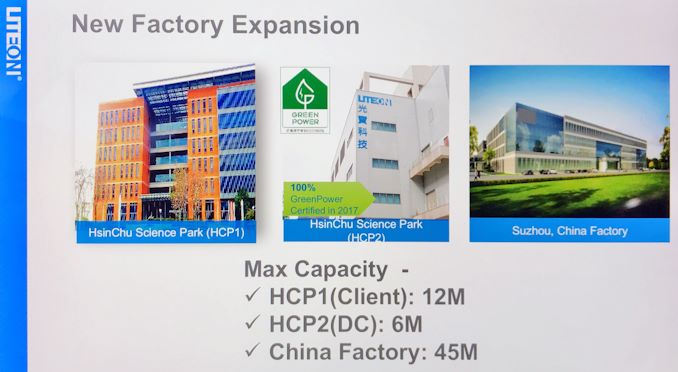
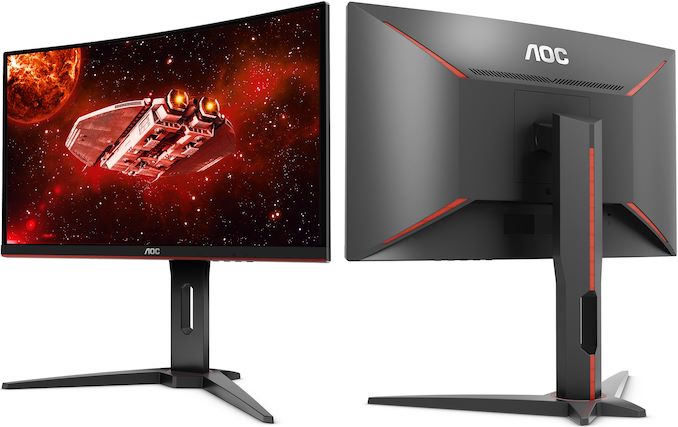
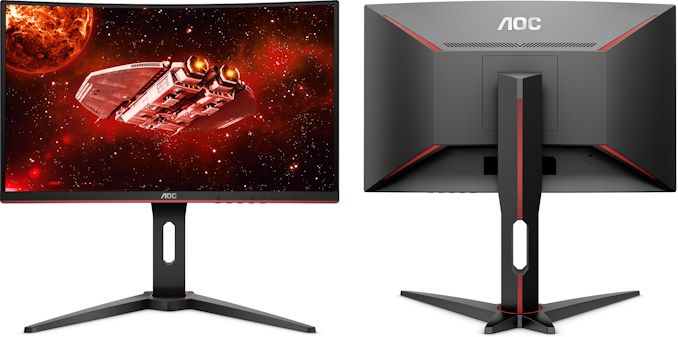
















Bookmarks